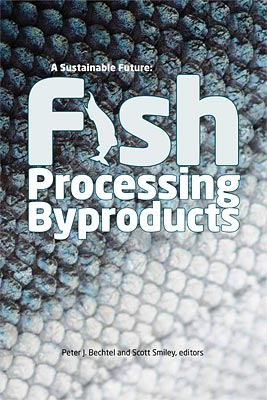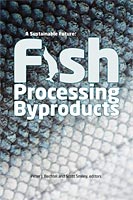
Storage effects on separated pink salmon processing byproducts
T.H. Wu, and P.J. Bechtel
- Price: $1.50
 This is part of A Sustainable Future: Fish Processing Byproducts
This is part of A Sustainable Future: Fish Processing Byproducts| Format | Price | |
|---|---|---|
| PDF download [271.3 KB] | $1.50 | Add to Cart |
Description
There is growing demand for utilizing fish processing byproducts. Separation of different parts can be accomplished directly from the commercial processing line, and further processing of the separated parts can produce specialized feeds or other end products. With differences in the starting material composition, microbial content, and enzyme levels, differences in the composition of the end products as well as standard metrics of quality are to be expected. Knowledge of initial composition values and different rates of their diminishment during the process of spoilage could lead to options for storage and transport of the segregated byproducts. The objective of this study was to evaluate changes in separated pink salmon heads and viscera as a function of storage time and temperature. The results showed differences in the starting material and rates of change for oxidation, spoilage, and formation of biogenic amines between heads and viscera. Starting concentrations of thiobarbituric acid reactive substances (g malondialdehyde per g byproduct) in heads were much higher than in viscera. After 10 days of storage, total volatile base nitrogen increased only at a rate of 7 mg N per 100 g per day in heads, while in viscera the rate was five times greater at 32 mg N per 100 g per day. Formation of histamine was also higher in viscera and ended with a concentration of 1,432 ± 206 mg per kg in viscera compared to 20.8 ± 3.6 mg per kg in heads. These differences should be taken into account when examining options for storage and transport of the segregated processing byproducts.
Item details
- Item number: AK-SG-10-02n
- Year: 2010
- DOI: https://doi.org/10.4027/sffpb.2010.14



